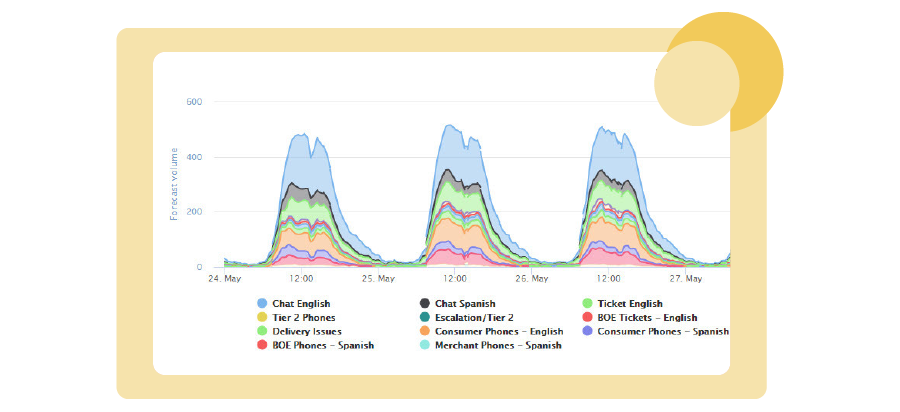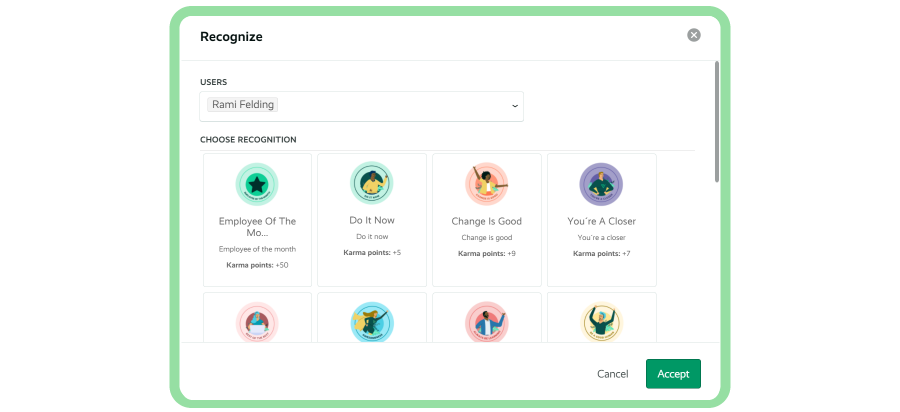Adapting To A Global Workforce: Managing Remote Teams Effectively
While the pandemic may seem distant in some of our minds, one shift remains prevalent long after it became safe to go back to offices — the need and desire to work remotely. Not only do contact center agents want additional flexibility in their work schedules, but many leaders saw that agents did not need to be in a defined office space to get their jobs done well. However, managing remote teams effectively comes with its own set of challenges.
First, let’s define remote work. Remote work is the practice of working from a location other than the traditional office setting. This could be from home, a co-working space, or any other location with an internet connection. Hybrid work, which has also dramatically risen in popularity post-pandemic, is when companies offer employees a mix of both on-site and remote work options.
The concept of remote teams and remote work has gained popularity for several reasons. It enables companies to access a larger talent pool and recruit the best candidates, regardless of their geographical location. It also provides employees with more flexibility and a better work-life balance, as they can create their own schedules and avoid long commutes. Forty-three percent of companies in a January 2022 PwC executive survey said they would keep offering hybrid work options for employees and 30% said they’d make remote work a permanent option.
While there are many benefits of remote teams, managing remote teams effectively comes with its own set of challenges. Communication can be more difficult when team members are not in the same physical space, and it can be harder to build a strong company culture and sense of community. Additionally, some individuals may struggle with the lack of structure and boundaries that come with working remotely. Finally, the natural learning that may take place from listening to a co-worker handle a difficult interaction, can be invaluable to it is important to somehow duplicate that learning as remote work becomes the standard at many organizations.
Overall, remote work has redefined how we collaborate and do business. And, it’s forced companies to get creative in their management practices to figure out how to best manage remote teams. With more employees demanding flexible work options, it is likely that remote work will become even more common in the future, and companies will need to continue to adapt to thrive.
Benefits of Remote Teams
Remote teams, or teams that work together from different locations, are popular in today’s workforce. The rise of technology has made it easier than ever for employees to work from home or other remote locations, and many companies are reaping the benefits of this arrangement.
One of the major benefits of remote teams is increased flexibility. Employees can work from a location of their choosing, which leads to increased job satisfaction and work-life balance. This flexibility can also make it easier for companies to attract and retain top talent, as it allows employees to work in a way that best suits their individual needs.
Remote teams also have the potential to increase productivity. Without the need to commute to an office, employees can save time and energy and are often able to start working earlier in the day. Additionally, the flexibility of remote work can lead to employees feeling more empowered and in control of their schedules, which can lead to a more motivated and productive workforce.
Cost savings is another key benefit of remote teams. With fewer employees in the office, companies can save on overhead costs such as office space and utilities. Additionally, remote work can potentially lead to lower turnover rates and reduced absenteeism, resulting in significant cost savings for businesses.
Remote teams also have the potential to increase diversity within a workforce. Without geographic constraints, companies can hire employees from a wider range of backgrounds and locations, leading to a more diverse and inclusive workforce.
Overall, the benefits of remote teams are numerous, and many companies are finding that embracing remote work can lead to a more satisfied, productive, and cost-effective workforce. However, leading and managing remote teams effectively requires managers to adopt different management practices to fully reap the benefits of remote work.

How to Get the Most Out of Your Remote Workforce
We understand the clear benefits of remote work in cost savings, agent happiness, and access to a wider talent pool. However, in order to harness all the benefits of a remote talent pool, you need to understand how to get the most out of your remote workforce. Let’s talk about solutions and best practices you can leverage to set your remote teams up for success.
1. Leverage a Workforce Management Solution
When you have a globally dispersed team, it becomes even more important to leverage a solution that accounts for differing schedules and skill sets. That’s where a Workforce Management solution moves from a “nice to have” to a “must have.”
Before bringing in an automated solution for scheduling, many call and support centers may have had entire teams dedicated to managing schedules, adherence, time off, and other complexities that come with managing a remote workforce and global teams. One of Playvox’s customers, MongoDB, had many of the typical challenges seen with dispersed global teams. The operations team was using spreadsheets and calendar tools for their scheduling needs. As a result, they had daily issues such as incorrect schedules that did not take agent preferences, availability, or PTO into account leading to gaps in coverage.
With five separate WFM schedulers handling schedules for different regions, scheduling for things such as daylight savings changes was difficult since not all regions changed time simultaneously. And, because the schedulers used different processes, it was a challenge to scale to meet the growing demands of their customer base. Needless to say, managing their remote work team effectively was a significant problem.
Once MongoDB implemented Playvox Workforce Management, these issues were resolved. “The Playvox WFM solution has made a significant impact on our ability to scale our customer operations team and gives our agents a morale boost as they now know their schedules will be accurate. We would not have been able to make the progress we have without Playvox WFM,” summarized Anokhee Mepani, Director of Global Operations / Technical Services, at MongoDB.

2. Employ Gamification
Gamification is often employed for managing remote contact center agents because it provides workers with tangible rewards as an incentive. And, while you may think gamification is not necessary to engage and motivate working adults, research published by Harvard Business Review would tell you that gamification works quite well in motivating and engaging employees.
By applying scores and prizes to your employees’ everyday tasks, you can make work feel more enjoyable and increase employee engagement. And, there is no need to go all out on the types of rewards offered. Items such as gift cards, paid time off, dinner vouchers, and gadgets all do wonders to improve morale and help job satisfaction. Even very simple things like badges and leaderboards that can be displayed and accessed within centralized solutions does wonders to motivate and engage staff. Better yet, having a more engaged workforce makes your task of managing remote teams effectively a little easier.

3. Calibrate Contact Center Interactions Fairly and Consistently
While we all know that feedback is important, when a call center gets busy, coaching, mentoring, and even quality management may fall to the side as agents and their leaders look at meeting and beating agreed-upon Service Level Agreements (SLAs). This is a mistake as those employees who don’t receive consistent feedback, are more likely to become disengaged and even seek opportunities elsewhere. According to Forbes, when you give people feedback about their actions in a timely manner, without fear of reprisal, it gives them a healthy opportunity to work toward better behaviors.While it might be difficult to find time to provide feedback, leveraging a Quality Management solution can help, especially when you leverage one that has AI already incorporated into it. Tools such as these can automate many of the processes that go into preparing for a session between your QA analyst and your agent. The best Quality Management (QM) systems also enable agents to provide commentary on feedback provided and dispute anything that the agent may not agree with the analyst about. Giving the agents a voice in quality processes enables more confidence and buy in, resulting in stronger performance improvements. QM solutions can also assist you in calibrating agent performance against various agent populations — such as those in the same geographical location, those on the same teams, or comparing newer employees against more seasoned agents.

4. Ramp Up Communication
It is said that people only retain a portion of what they hear. With this in mind, it makes it crucial to communicate things such as changes in processes, shifts in strategy, and other important information in several different ways. When you add in the challenge of managing a remote workforce, the challenges that go along with effective communication multiply quickly.
While you can leverage many of the tips offered here, you can also get creative. For example, Playvox’s customer, Sutherland, started a podcast to share important information with their global agent population. They found through using a unique and innovative way to communicate with employees through an interactive podcast that agents were more engaged, delivered better customer service, and retained the information shared better than information shared via written or verbal forms of communication.
5. Have Clear Policies in Place for Managing Remote Work
Just like you may have policies when someone is working within an office around breaks, lunchtime, socializing, or communicating clearly and effectively to customers, it is just as important to have the same sort of policies for managing remote work effectively. Some examples of policies we’ve seen our customers adopt include things like time logged into the CRM system, handling time for certain types of interactions, sending a photo of a dedicated workspace, having a distraction-free space for work, and post-contact follow up within certain parameters. When you have clear policies and guidelines in place, you can ensure that expectations are clear and productivity remains high.
Remote Work Improves Work-Life Balance for Employees
While the tips above provide distinct ways to manage remote teams more effectively, you should also think about the positive impact of work-life balance for your remote teams. By offering more flexible work arrangements such as flexible hours, work-from-home, or even compressed workweeks, you can improve your agent’s mental well-being and enable them to better manage their work-life balance.
While remote work can be one way to improve job satisfaction, there are other policies you can put in place to further improve employee engagement. For example, you might consider implementing policies to limit the amount of overtime or the expectation of staying connected to work outside of normal business hours. You could also consider access to wellness programs, counseling services, or even time management training.
Ultimately, improving work-life balance for employees is not only beneficial for the individuals themselves, but also for the company as a whole. Employees who feel supported and have a healthy work-life balance are likely to be more productive, engaged, and satisfied with their work. This can lead to lower turnover rates, higher job satisfaction, and a more positive work environment overall, while also improving the customer experience your agents deliver.
Remote Work and Remote Teams Are Here to Stay
As noted, the pandemic accelerated many companies’ acceptance of remote work, mostly by necessity. However, as many pushes for Return to Office (RTO) can attest to, the desire to work remotely or in a hybrid fashion isn’t going away. Embracing remote work is becoming a norm for many companies to remain competitive. To learn more about how you can more effectively manage your remote team and improve agent motivation, download: “Celebrating Success In The Contact Center: Top Tips For Engaging And Motivating Agents.”







